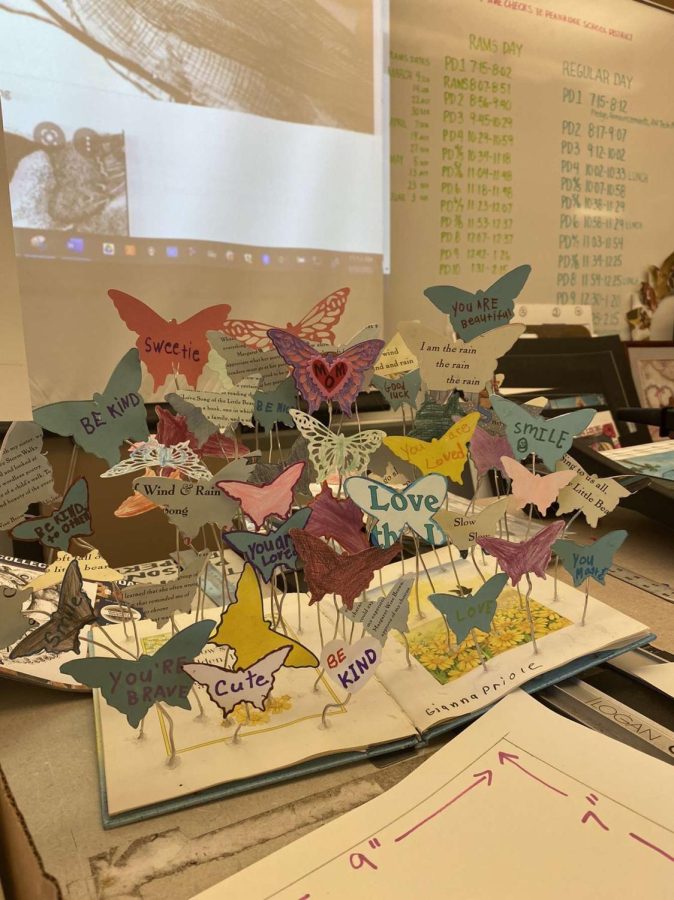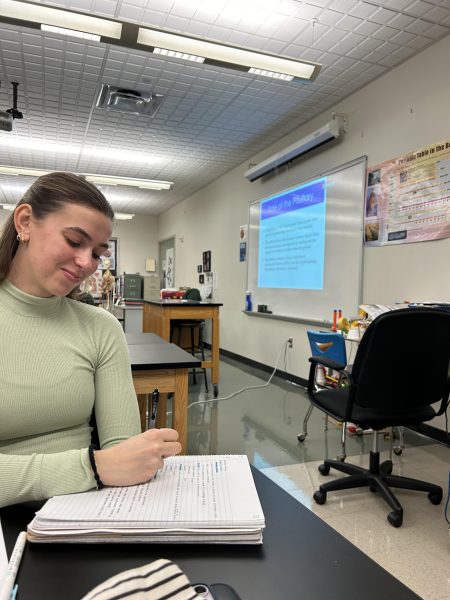Art Brings a Splash of Color in Your Day
Why Schools Should Encourage More Students to Take Art Classes
Art has been an integral part of our society ever since the prehistoric era. Its allowance for expression and communication brought about its importance. Art allows people from different cultures and times to communicate with each other through their creations. However, when looked at from a modern school perspective, art classes are often overlooked by students. Students should be more encouraged to enroll in art classes because of academic improvement, creative expression, and a calming opportunity.
The benefits of art extend to the classroom. Taking art classes from a young age helps children with developing motor skills, language skills, social skills, decision making, risk-taking, and inventiveness. Art teaches students to be more thorough and observational which boosts their critical thinking skills. In fact, a report by Americans for the Arts states, “ Young people who participate regularly in the arts (three hours a day on three days each week through one full year) are four times more likely to be recognized for academic achievement, to participate in a math and science fair, or to win an award for writing an essay or poem than children who do not participate.” This complements other studies which found increased academic achievement amongst those students who participated in the arts. A study conducted by Missouri public schools in 2010 found that increasing arts education leads to an overall increase in school performance, such as fewer disciplinary infractions and higher attendance, graduation rates, and test scores. There was a correlation between mandatory art and music education classes and higher ranking math and science test scores for countries such as Japan, Hungary, and the Netherlands. Additionally, it is found that taking art classes for long periods of time, in a continuous learning environment, helps students as well. For example, students who take four years of arts and music classes score an average of over 150 points higher on the SAT than students who take only one-half year or less. However, the benefits of art extend beyond the classroom by setting up students for success. Around 72 percent of business leaders say that creativity is the No.1 skill that they seek when hiring.
Art helps support creativity by allowing people to design, generate, and compose new ideas and express them through their artwork. Brent Koch, an art teacher at Pennridge High School, says, the most fulfilling part of teaching art class is, “starting out with an idea, and having an entire class take that idea and interpret it differently and go different ways”. Art stimulates many different parts of the brain such as the frontal cortex. The frontal cortex is seen as the “hub of creativity” since it is responsible for many functions such as working memory which is a part of the creative thinking process. A creative environment brings about abstract and analytical thinking. Karen DePeppe, an art teacher at Pennridge High School, says, “Art gives you more intuitive thought processes, it is vital in schools. Most of school is linear thought processes, formulas to plug, but art gives you an opportunity to break past that and have more out-of-the-box ideas.” Alex Wensel, a student at Pennridge High School, says that she finds art fulfilling because she gets to use her own brain and get creative.
Art also brings about relaxation. Art therapy is a widespread and well-known form of therapy. The goal of art therapy is to use creativity in order to use self-expression so that they can find ways to gain personal insight and develop new coping skills. Alex Wensel, a student at Pennridge High School, says that the environment in an art classroom is, “very judgment-free and relaxed, with room to experiment and grow”. “Art is known to be very therapeutic; you enter a zone when you’re doing art, and your problems around you disappear because you are so hyper-focused on your tasks, you can escape,” says Koch.
The main criticism of involving more art classes in a student’s education is that it is seen as a “waste of time”. However, the benefits of art classes as discussed above extend to the classroom and beyond by instilling critical thinking skills and helping students express themselves. In addition to this, art classes can be expensive. However, students do not need expensive materials in order to create art. They can use items commonly found around the house and upcycled materials. Even if art is not available in school, DePeppe says, “make something, make anything, doodle in math class.”
Overall, there are many reasons that art should be implemented in classrooms. Not only does art help improve students academically, but it also encourages them to think creatively and have an opportunity to relax. Schools should offer more opportunities for students to engage in art and explore their creativity. Students should also be encouraged to create art beyond the classroom and continue to be positively encouraged by teachers. Jill Troutman, an art teacher at Pennridge High School, often says, “Art is like people. Everyone is different and should not be judged.”
Sources:
https://kids.frontiersin.org/articles/10.3389/frym.2017.00019
https://www.dosomething.org/us/facts/11-facts-about-arts-education
https://www.americansforthearts.org/by-topic/arts-education/10-arts-education-fast-facts
https://ednote.ecs.org/new-data-who-is-taking-art-classes/
Shreya Tripathi, Grade 12. Interests/hobbies include Key Club, Executive Council, NHS, Mini-Thon, S.U.F.A, Red Cross Club, Build-On, volunteering at the...
Zoe Boone, Grade 12. Interests/hobbies include dancing, FBLA, spending time with loved ones, shopping, baking, and visiting the beach. Zoe plans to attend...










